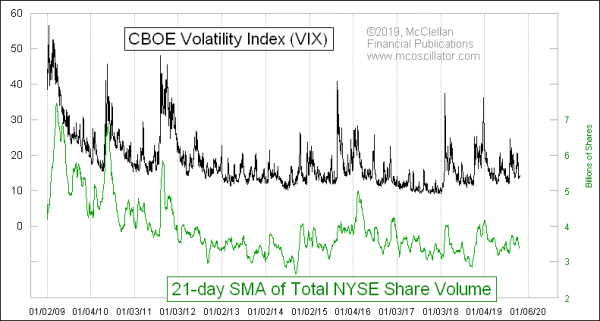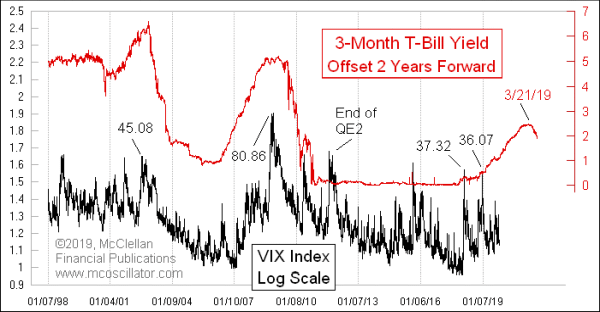
Brokerage firms have been bemoaning the declining amounts of share volume versus a few years ago. Trading volume equals commissions, or at least it used to before Schwab led the race to the bottom and went to zero commissions on online retail trades. The other discount brokers followed suit.
Economists will tell us that, if you lower the price of something, people will consume more of it. But, so far, that is not working out for trading volume with zero commissions. Instead, trading volume is more dependent on a different factor - volatility.
This week's chart compares the VIX Index to a 21-day moving average of NYSE share volume. The two plots are not identical, but they come pretty close. So, the lesson is that if you are a stock broker, or an exchange, and you wanted to see trading volume go up to boost commissions, you should try to arrange for the stock market to undergo increased volatility. Good luck with that diabolical plan.
But for those who seek higher trading volume, you can take heart from the message of this next chart, showing that the VIX tends to follow in the footsteps of short-term interest rates:

The VIX Index is obviously a lot noisier than the 3-month T-Bill yield, but we can still see the same dance steps in the way that each of them trends. Using the 2-year offset in this chart, that foretells a peak of volatility around March 2021, 2 years after the March 2019 peak in interest rates. And we can expect generally rising levels for the VIX between now and then.
After March 2021, the "short VIX" trade which used to work really great (until XIV blew up) should come back and be a thing again. But it will be hard to make money with that bet between now and March 2021.
